Subfamilia: LAMIINAE / Tribus: SAPERDINI
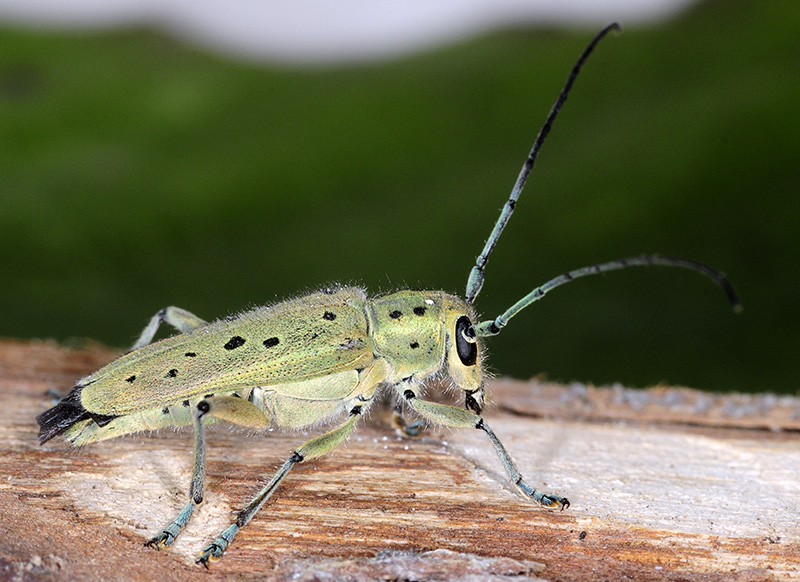
[Photo © P.Jelínek]
Saperda punctata is a vulnerable species in Central Europe. The main reason for its decreasing abundance must be seen in dying out of its hosts, old elm (Ulmus) trees, suffering from the Dutch elm disease (tracheomycosis). However, as we could observe this species can also develop in other tree species. We have recorded it from Quercus and Salix. In our opinion the ability of the beetle to develop in alternative hosts will ensure the population continuity even in areas where old elm trees die out totally. In SE Europe the species is more abundant. Larvae of this species feed subcortically in dead trunks of the hosts. Later they enter the sapwood creating a short pupal cell. The larvae secure themselves there by a wad of fibrous frass, a very typical phenomenon in all European Saperda species (Saperda perforata, Saperda scalaris, and Saperda octopunctata.
Body length: 11 - 18 mm Life cycle: 1 - 2 years Adults in: May - July Host plant: polyphagous in deciduous trees, but strongly prefers elm (Ulm) Distribution: Europe except North, Iran, Russia, Turkey
The mounted beetles was beaten from dying elm (Ulmus) near Perivoli village (SW of Corfu Island, Greece). The living specimens were reared from larvae found under bark of a dead elm (Ulmus) trunk in Břeclav (South Moravia, Czechia).Collected by M.Hoskovec and P.Jelínek
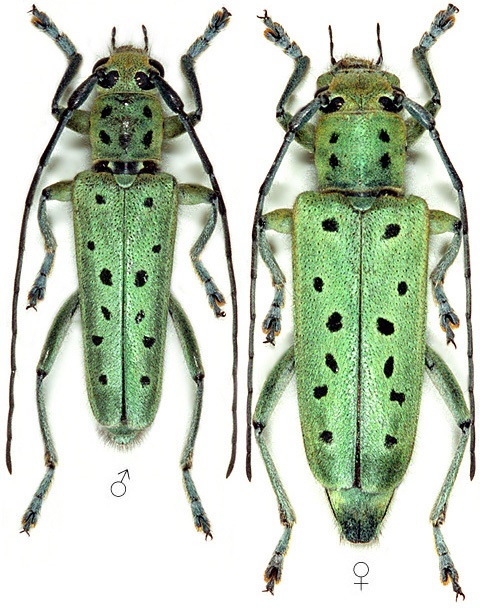
[Photo © M.Hoskovec]
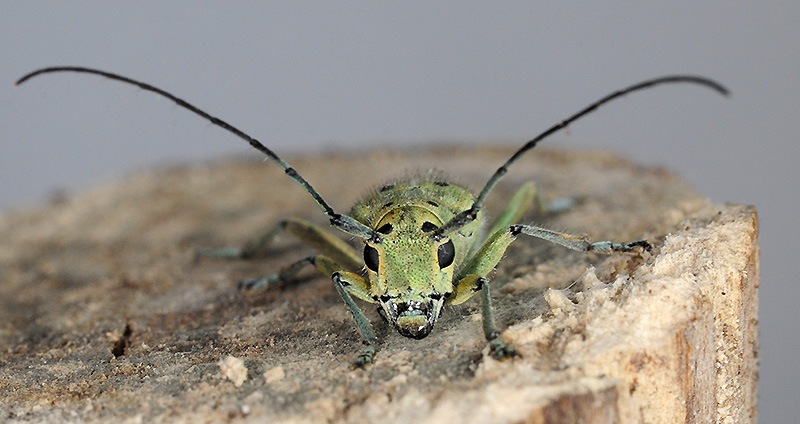

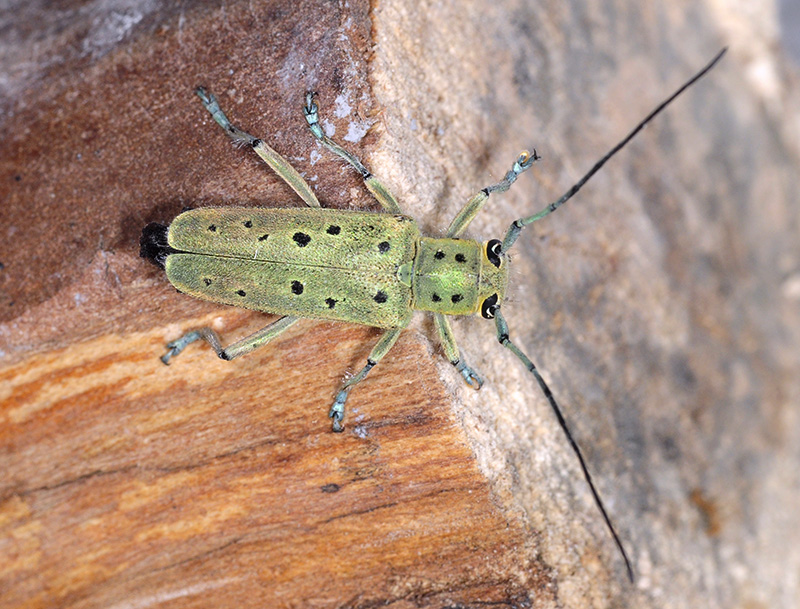
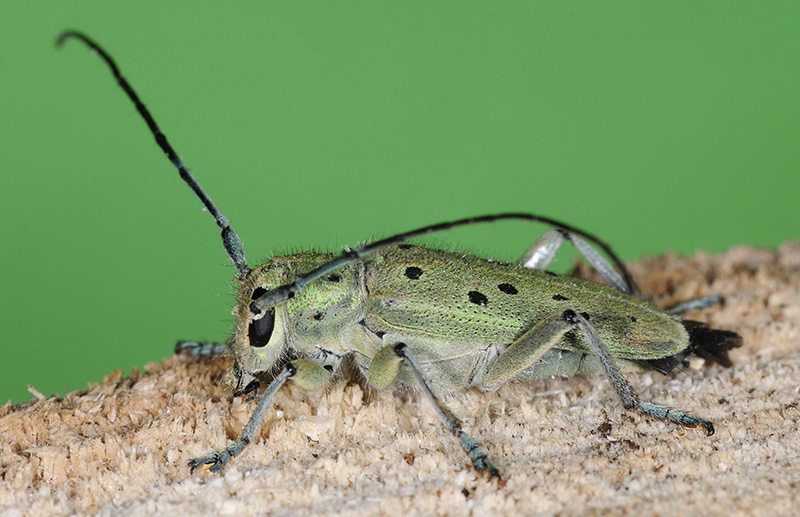
[Photo © P.Jelínek]
Subfamilia: Lamiinae Latreille, 1825
Tribus: Saperdini Mulsant, 1839
Genus: Saperda Fabricius, 1775
Subgenus: Saperda punctata (Linnaeus, 1767)
